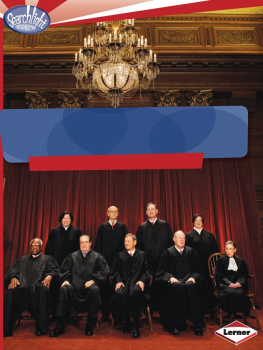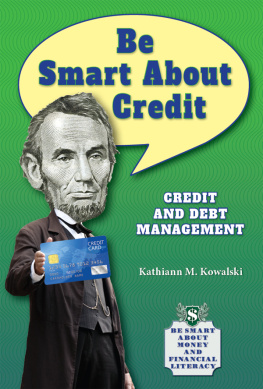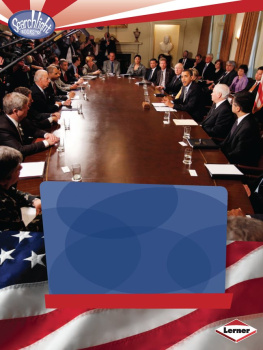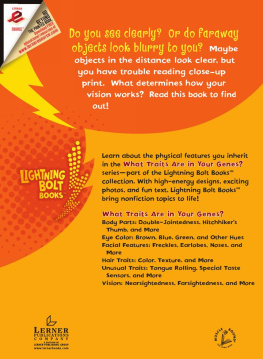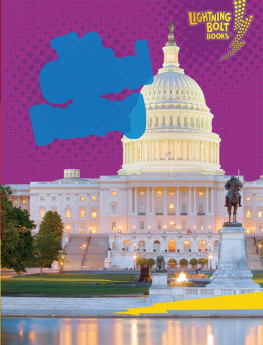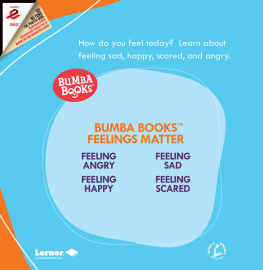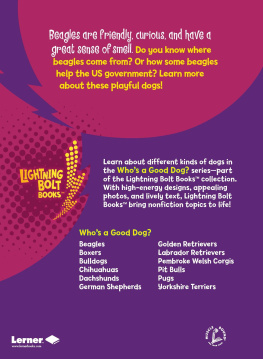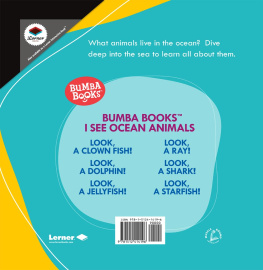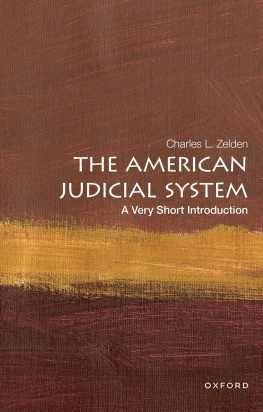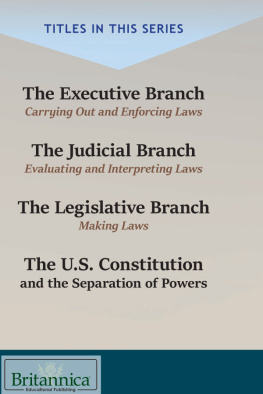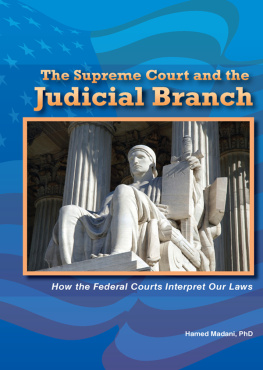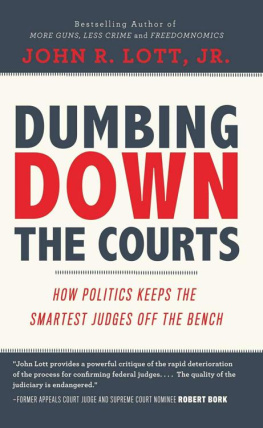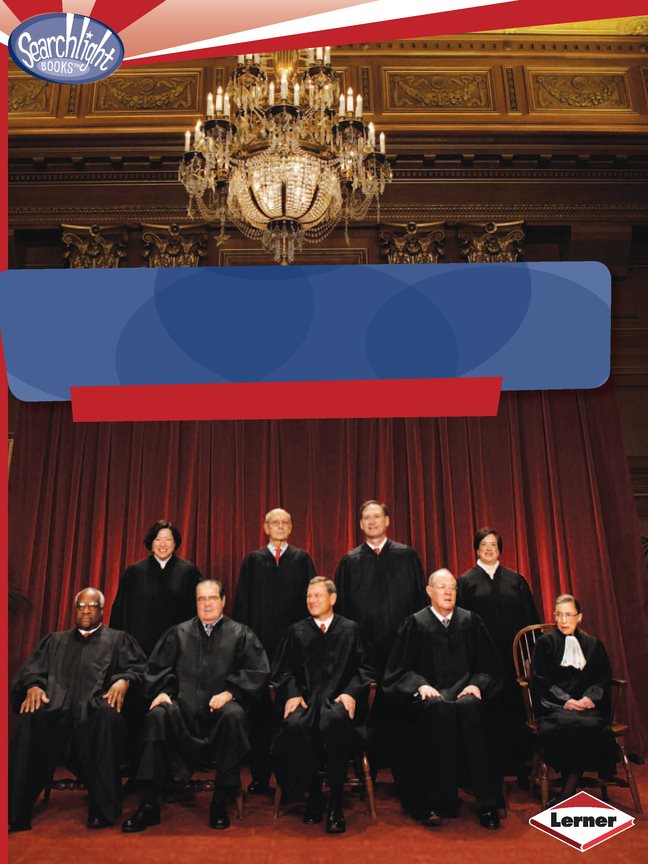Judges and Courts
A Look at the Judicial Branch
Kathiann M. Kowalski

Copyright 2012 by Kathiann M. Kowalski
All rights reserved. International copyright secured. No part of this book may be
reproduced, stored in a retrieval system, or transmitted in any form or by any means
electronic, mechanical, photocopying, recording, or otherwisewithout the prior written
permission of Lerner Publishing Group, Inc., except for the inclusion of brief quotations in
an acknowledged review.
Lerner Publications Company
A division of Lerner Publishing Group, Inc.
241 First Avenue North
Minneapolis, MN 55401 U.S.A.
Website address: www.lernerbooks.com
Library of Congress Cataloging-in-Publication Data
Kowalski, Kathiann M., 1955
Judges and courts: a look at the judicial branch / By Kathiann M. Kowalski.
p. cm. (Searchlight bookshow does government work?)
Includes index.
ISBN 9780761365167 (lib. bdg. : alk. paper)
1. CourtsUnited StatesJuvenile literature. 2. Procedure (Law)United States
Juvenile literature. 3. LawUnited StatesJuvenile literature. I. Title.
KF8720.K69 2012
347.731dc22 2010041795
Manufactured in the United States of America
1 DP 12/31/11

Contents
Chapter
REAL- LIFE
COURT CASES ... page
Chapter
COURTS FROM TOP
TO BOTTOM ... page
Chapter
THE SUPREME COURT ...page
Chapter
CRIMINAL LAW ...page
Chapter
CIVIL LAW ...page
Chapter
THE COURTS AND YOU ...page
Chapter
REAL- LIFE
COURT CASES
Real- life court cases arent
quite like the ones on TV.
They dont follow a script. They
dont end in an hour. But they are
dramatic. And they affect real people.
They can
even affect kids!
This is a scene from the TV
show Law & Order: Los Angeles.
How are real- life court cases
different from the ones on TV?
Consider this case. A fourth- grade boy wears a
T-shirt to school with the name of his favorite sports
team printed on it. His school bans clothing printed with
messages. His teacher makes him turn his shirt inside
out. The boy thinks its unfair. His parents agree. They
take the case to court.
Courts handle cases like this every day. The cases
affect real- life people people just like you.
Sometimes kids are
involved in court cases.
Courts are used to
settle disagreements
between people or
between a person and
the government.
Whos Who?
Like any drama, courts have a cast of characters. The
plaintiff is the person who goes to court for help. The
defendant is the person accused of doing something
wrong. Lawyers argue each side of the case. They ask
witnesses questions. Witnesses have special knowledge
of the case. A group of people called a jury listens to the
case. They decide if the defendant is guilty.
Sometimes plaintiffs and defendants accept a jurys
decision. Other times, they appeal. This means they go
to another court to try to get the decision changed.
This picture shows a lawyer (LEFT)
asking a witness (RIGHT) questions
in front of a judge (CENTER). A
judges job is to know the law and
to keep the court in order.
Where the Courts fit In
The courts have a big job. But they dont work alone.
Where do they fit into the government? The answer is in
the U.S. Constitution. The Constitution guarantees rights
for all Americans. These rights appear in amendments
(changes people made throughout the years) within the
Constitution. The Constitution also sets up a federal
(national) system of
government.
Within the federal
system, three
parts share the
governments work.
The parts are called
branches. The three
branches are the
legislative branch,
the executive
branch, and the
judicial branch.
This is the first page of the
U.S. Constitution. The entire
Constitution is four pages.
Congress is the legislative branch. It is made up of the
Senate and the House of Representatives. The legislative
branch makes laws.
The executive branch enforces laws. The president
leads the executive branch.
PRESIDENT BARACK OBAMA
SPEAKS TO THE SENATE AND THE
HOUSE OF REPRESENTATIVES.
The courts make
up the judicial branch.
When disagreements
about the law come
up, the judicial branch
interprets the laws. In
other words, it decides
what laws mean. It
decides things like
whether free- speech
laws mean a student
has the right to wear
a T-shirt with the
name of a sports
team printed on it.
Judges have to know the law
well. This knowledge helps
them run their courtrooms
and decide cases.
What Is the Law?
You know the judicial branch interprets the law. But what
are laws?
Laws are rules made by the government. Statutes are
laws that are written down. Criminal statutes say people
cant harm others. Those who disobey criminal statutes
may go to jail.
When someone breaks a
criminal statute, a police
officer arrests him or her.
Civil statutes have to do with business, health, and
other subjects. Those who disobey civil statutes might
have to pay back money lost because of their actions.
For example, lets say a baker and a grocer agree that
the baker will supply baked goods to the grocer. If the
baker breaks the agreement, the baker may have to pay
the grocer money lost because of the broken agreement.
Unlike statutes, common laws arent written anywhere.
Common law is judge- made law. Common laws develop
when judges make decisions in certain court cases.
When similar cases arise later, judges look at earlier
decisions. They try to treat similar cases the same way.
When a baker makes a
written agreement with
someone to provide
bread, he is entering a
legal agreement. if he
breaks that agreement,

